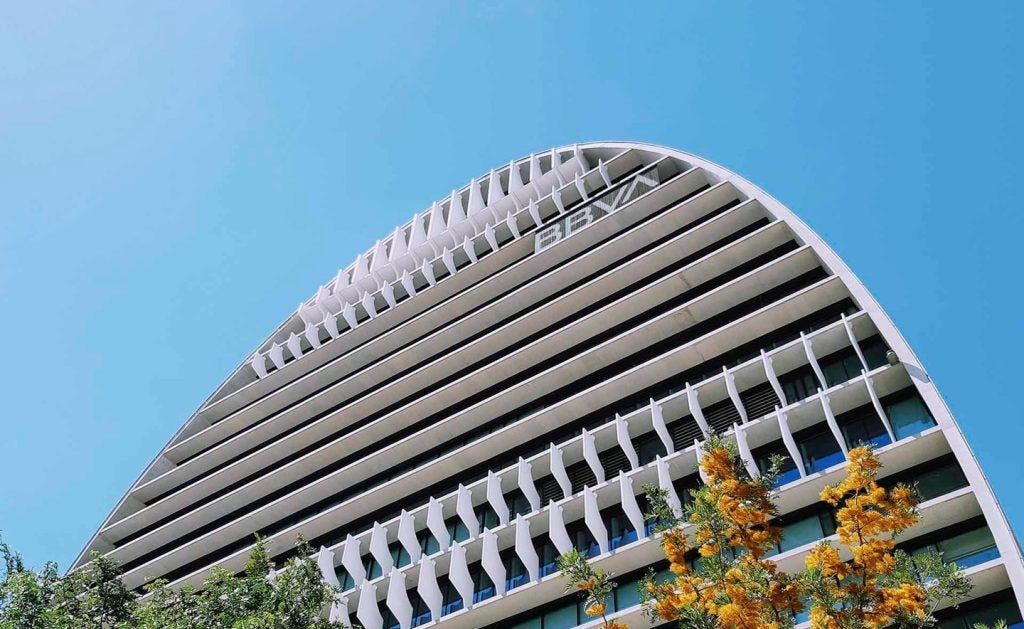group by assets, has not suffered as much as some of its rivals
from the subprime collapse and remains one of the more inventive,
competitive retail players in the country. Charles
Davis talks to Richard Hartnack, head of its consumer
banking division.
In an era marked by rising economic uncertainty, US Bancorp has
maintained a steady hand, using its fiscal conservatism to its
advantage while refusing to stand still on the retail side of its
operations.
In stark contrast with many of its subprime-saddled competitors,
the Minneapolis-based banking group has managed to weather the
storm with a healthy capital cushion and relatively miniscule
exposure on the mortgage markets. While many of its larger urban
rivals are wrestling with liquidity issues, US Bancorp has moved to
augment its retail banking footprint in several key metropolitan
markets, while further driving growth in its revenue-rich payments
unit.
US Bancorp hired veteran retail banking executive Richard Hartnack
from UnionBanCal in 2005 to head its retail bank, US Bank. Hartnack
is the catalyst behind a systematic effort to revamp the
bricks-and-mortar network throughout the bank’s retail network,
which stretches from eastern Ohio to Seattle.
It’s long been known as a budding retail behemoth built with
old-fashioned Midwestern conservatism, with more than a dash of
entrepreneurial spirit and willingness to experiment. As the
sixth-largest US commercial bank in both assets and market
capitalisation, US Bancorp gets 26 percent of revenues and 23
percent of earnings from a powerhouse global payments business that
increased revenues at a compounded annual growth rate of 13.5
percent between 2006 and 2007. It also ranks third in US merchant
acquiring, fourth globally in corporate cards, sixth in debit cards
and seventh in retail credit cards.
In fact, more than half of US Bancorp’s income comes from fee-based
business lines. Its average return on equity tops 20 percent –
about twice the industry average (its ROA was the highest last year
in the US among its peer group – see table below). Recent
earnings reports underscore the depth of US Bancorp’s earnings
power: thanks in large part to the stable income generated from its
payments and wealth-management businesses, per-share earnings
actually nudged up a penny in the wild third quarter of 2007, to 67
cents, while US Bancorp’s return on equity for the year ending in
September 2007 was a healthy 22.9 percent.
How well do you really know your competitors?
Access the most comprehensive Company Profiles on the market, powered by GlobalData. Save hours of research. Gain competitive edge.

Thank you!
Your download email will arrive shortly
Not ready to buy yet? Download a free sample
We are confident about the unique quality of our Company Profiles. However, we want you to make the most beneficial decision for your business, so we offer a free sample that you can download by submitting the below form
By GlobalDataThe fourth quarter of 2007, while more dismal, was relatively
uneventful for the group, particularly when compared with the
quarterly earnings of its competitors. Earnings fell 21 percent to
$942 million compared with a year earlier ($1.19 billion). Profit
for the full year was $4.32 billion, a 9 percent drop from
2006.
US Bancorp executives blamed the earnings shortfall on the
previously announced charge of $215 million stemming from an
industry-wide settlement with Visa and a $107 million write-down on
securities in money market funds. These Visa-related changes should
be more than offset by the company’s proportionate share of the
gains that will be recognised from Visa’s 19 March IPO (see
News Digest).
Without those two charges, which together shaved 13 cents off the
bottom line, fourth-quarter earnings at the bank would have been
higher than earnings in the fourth quarter of 2006. In fact,
revenue increased 3.4 percent in the quarter to $3.54 billion,
beating analyst expectations of $3.51 billion. A 4 percent increase
in interest income, which is generated primarily through lending,
and a 2.8 percent increase in fee income helped boost sales.
Perhaps most important of all, less than 2.8 percent of US
Bancorp’s loan portfolio is subprime, insulating the bank from the
troubles that have many US banks in retreat. Not that the bank
emerged completely unscathed: provision for credit losses for the
fourth quarter was $225 million, an increase of 33.1 percent from
the fourth quarter of 2006 and 13.1 percent from the third quarter
of 2007.
US Bancorp is rated a five-star investment by Morningstar and is
one of legendary investor Warren Buffett’s recent share purchases.
Bank management tries to return at least 80 percent of earnings to
shareholders annually, achieve long-term earnings per share growth
of 10 percent, and keep return on equity above 20 percent. The bank
has written down less than 1 percent of its loans and has less than
1 percent of its loans past due by 90 or more days.
“The principal way in which we have prospered is by being really
cautious about risk taking, and decisions we have made over the
years have really paid off,” Hartnack tells RBI. “We saw a
really frothy economy, and we had a lot of discussion about these
exotic lending products, and folks not paying all the interest on
loans, and we just hesitated to get into that. It’s just not our
style.”

That restraint has placed US Bancorp in a position of great
strength. The $238 billion-asset group is the retail market leader
in deposits in St Louis and Portland, Oregon – cities where the
bank unveiled its PowerBank initiative two years ago. And a bank
long touted for its cost-cutting efficiencies now hopes to
jump-start revenue growth through a major marketing and sales
push.
Hartnack is expanding PowerBank with the confidence of a banker
with deep capital reserves. PowerBank is not inexpensive, after
all: aimed at increasing organic deposit growth, it features a
bottom-to-top overhaul of retail operations, adding customer
service staff, extending hours, refurbishing old branches and
opening more branches inside retail stores. “PowerBank is about
reformatting our competitive position in our legacy markets first
and then using what we learn from that in all of our other
markets.”
In the Twin Cities – Hartnack’s current PowerBank project – that
starts with refurbishing branches “top to bottom, from the paint to
the carpet and the furniture, even new career apparel for branch
staff,” he said. The makeover has been accompanied by a 63 percent
increase in ad expenditure, the rollout of children’s banking and
savings programmes, and a major push in small business banking,
including the hiring of 28 specialists. The bank also added coin
counters in 10 branches, extended banking hours and added new ATMs
with additional capabilities.
“It’s a huge effort, and the result is that we get a marked rise in
customer satisfaction, lower employee turnover and, in St Louis,
where we have been at this for a while, we see real net growth in
terms of deposits and new accounts. We are trying to create points
of difference between our bank and the competition, which will, in
turn, increase market share, revenues and profits.”
Hartnack said that the company’s own surveys show that customer
satisfaction is at record levels in St Louis, that deposits are on
the rise, and that the PowerBank operation is profitable.
The renewed focus on bricks-and-mortar basics has much to do with
the change in top executives at US Bancorp that took place in 2006
– Richard Davis, who took over as CEO in December 2006, has focused
more on organic deposit growth; he also resisted the lure of a
price-first strategy, opting instead for increasing loyalty among
the bank’s core customer base. “It would be easier, just because
it’s intuitive, if I had higher rates across the board,” Davis told
investors in February. “But I will tell you this, in terms of the
loyalty and the likelihood of the quality of the relationship, that
is a reverse correlation to the kind of opportunity people give you
when they come in just shopping for rates.”
Hartnack said that Davis, who earned widespread praise for his
calm, transparent response to the subprime mortgage crisis, has
created a palpable energy among the bank’s employees.
One of the key cogs in US Bancorp’s success in growing sales
without incurring major new costs is the bank’s leading position in
operating in-store branches. While the company typically opens
about 12 to 15 branches a year, it averages about 40 to 50 new
in-store banks, usually inside large retailers such as
supermarkets. The PowerBank effort in St Louis included
establishing 26 branches inside Schnuck Markets supermarkets,
staffing the in-store branches with about 130 employees, adding 85
employees – mostly tellers – to other branches, and increasing the
local advertising budget to $750,000, one of the largest among
financial services companies in that market.
CEO Davis has demonstrated his commitment to PowerBank, repeatedly
expressing his willingness to invest in the branch revamp. “St
Louis as a measure has moved from the middle of the pack to our
most highly impressive and highest-performing customer-service
satisfied market in all of our large markets, and we do hold
PowerBank accountable for that,” he said in January.
These in-store branches, which average about 400 to 600 square
feet, are 80 to 90 percent cheaper to open than a traditional
2,000-square-foot branch and cost 25 to 50 percent less to operate,
according to Celent, a research firm in Boston. Even better,
in-store branches attract 30 times more customers than traditional
banks because of the traffic generated by the retailer. “In-store
has been a tremendous part of the retail operation,” Hartnack said.
“It is a more capital-efficient distribution system, and we have a
formula that really works.”

Profit and loss responsibility
While most banks lump in-store branches with traditional branches,
US Bancorp has a separate management team that focuses exclusively
on the subcategory, and each in-store location has its own
profit-and-loss responsibility and compensation is based on
productivity, Hartnack said. And unlike some other banks that limit
the services available in in-store branches, US Bancorp’s sell
everything from mortgages to business loans. It staffs the in-store
branches with “universal bankers” who can do it all, from handling
transactions to selling mortgages.
“In-store is all about leadership, focus and commitment,” he said.
“We know it’s a convenience game, but we offer a full bank
experience, not a transaction-only sort of deal.”
Central to that game plan, Hartnack said, is improving the client
experience in the branch. US Bancorp has established a system of
“lab branches” to experiment with improving customer service. He
said the bank was also building two retirement planning centres in
the Twin Cities, with plans to extend that model as the bank learns
from the initial initiative. It’s a hub-and-spoke development model
that allows the bank to leverage its 2,518 branches.
“We’re high in the pack, but we want to be walk away best of
field,” he said. “Good intentions have taken us a long way, but to
get to the next level, we need to discover what truly delights our
clients. With the lab branch, we’ll work to drive customer
satisfaction to 90 percent, then have the branch personnel come in
from other branches in the region and work there and learn.”
The challenge before US Bancorp is turning a rather conservative
Midwestern institution into a sales-first culture while retaining
the fiscal prudence that built the bank. It’s a tough balancing
act, yet Hartnack said the company’s values are so deeply ingrained
that he worries little about fundamental changes. “The principles
that the company operates on haven’t really changed,” he said. “We
have the highest return on equity and return on assets in the
business, and this is the most shareholder-focused bank I have ever
worked in.”








